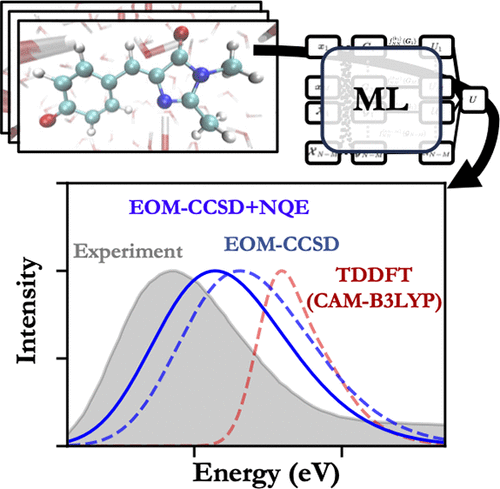
Abstract:
Hydrogen bonding interactions with chromophores in chemical and biological environments play a key role in determining their electronic absorption and relaxation processes, which are manifested in their linear and multidimensional optical spectra. For chromophores in the condensed phase, the large number of atoms needed to simulate the environment has traditionally prohibited the use of high-level excited-state electronic structure methods. By leveraging transfer learning, we show how to construct machine-learned models to accurately predict the high-level excitation energies of a chromophore in solution from only 400 high-level calculations. We show that when the electronic excitations of the green fluorescent protein chromophore in water are treated using EOM-CCSD embedded in a DFT description of the solvent the optical spectrum is correctly captured and that this improvement arises from correctly treating the coupling of the electronic transition to electric fields, which leads to a larger response upon hydrogen bonding between the chromophore and water.
